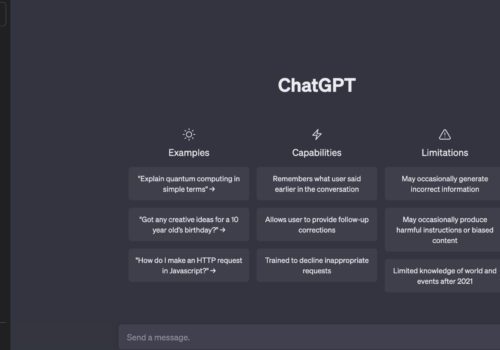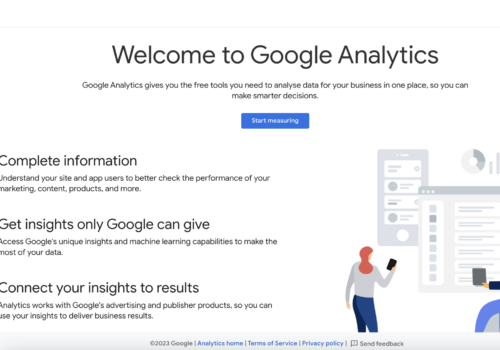E-learning is a modern and highly effective method of learning that involves using a computer or other electronic device to access educational materials and activities.
It offers a range of benefits, including the ability to study independently, receive personalized instruction, and interact with other learners. Additionally, e-learning is becoming more affordable every day.
E-learning is a broad term that encompasses any type of learning or training that occurs over electronic platforms. It can include online courses, video tutorials, social media groups, and even text-based exchanges with a mentor.
E-learning has quickly become one of the most popular ways to learn due to its convenience and flexibility.
Whether you are seeking to enhance your professional skills or learn something new for personal enrichment, e-learning has something to offer everyone.
What is e-Learning?
Take a closer look at e-learning and explore some of its different types available today.
When people hear the term “e-learning,” they generally associate it with an online course or program that helps them gain new skills or knowledge.

Source: Pexels
However, the “e” in e-learning stands for “electronic,” which makes any learning activity that occurs online or electronically e-learning.
This could include watching a tutorial video on YouTube, participating in a discussion forum with classmates, or even playing a game designed to teach new information.
In today’s world, technology has become an essential part of our lives. We use technology to communicate, learn, and be productive, whether at home or work.
Due to the ever-growing advancements in technology, e-learning is becoming a more popular and convenient way to learn.
What is the Value of e-Learning?
Learning has been transformed by e-learning, making it more accessible and convenient whilst allowing us to tailor our education.dual needs.
Source: Pexels
But what is the value of e-learning? There are many benefits of e-learning, but some of the most important ones include:
- E-learning can be accessed anytime, anywhere.
- E-learning is flexible and can be tailored to individual needs.
- E-learning is often more cost effective than traditional learning methods.
- E-learning can be more engaging and interactive than traditional learning methods.
These benefits make e-learning an attractive option for many learners. However, it is important to remember that e-learning is not a silver bullet, and it is not suitable for every situation. When used effectively, e-learning can be an extremely valuable tool.
E-learning has become an increasingly popular method of instruction in recent years, as technology has made it more accessible and easier to use.
There are many advantages to using e-learning, including the ability to reach a larger audience, the flexibility of learners’ schedules, and the cost savings compared to traditional classroom instruction.
However, e-learning is not without its disadvantages. One of the biggest challenges is ensuring that learners are engaged and motivated to learn.
Additionally, e-learning can be less personal than face-to-face instruction, and it can be difficult to provide the same level of support and feedback that learners would receive in a traditional classroom setting.
Despite these challenges, e-learning can be an effective way to learn, and its advantages often outweigh its disadvantages.
When used effectively, e-learning can provide learners with a flexible and convenient learning experience that is tailored to their individual needs.
What is the Definition of e-Learning?
E-learning refers to the use of electronic media and information and communication technologies (ICT) in education. It encompasses all the forms of electronically supported learning and teaching.
Technology has become an integral part of education today, enhancing pedagogy and offering new ways for educators to engage with learners.
E-learning Can Serve a Wide Range of Purposes, Such As:
- Distance learning: It allows students and teachers to interact remotely, using technology such as video conferencing, VoIP, and email. This type of e-learning is commonly used in higher education, where students may not be able to attend classes in person.
- Blended learning: It involves a combination of online and offline learning. Students may complete some of their coursework online and the rest in a traditional classroom setting.
- Gamification: This involves the use of game mechanics and elements in non-game contexts, such as education. Gamification can make learning more engaging and fun for students.
- Microlearning: It delivers small pieces of content, such as videos or audio clips, that can be easily consumed on mobile devices.
- Social learning: This employs social media and networking technologies to facilitate learning. It can include features like discussion forums, blogs, and wikis.
What is e-learning Used For in Education?
In recent years, e-learning has become a popular choice for many educational institutions. It is increasingly being used to deliver course content and as an assessment tool.
Source: Pexels
E-learning can be used to deliver course content in various ways. It can be used to create online courses, which students can take at their own pace. It can also be used to create and administer quizzes and exams. Additionally, e-learning can be used to provide feedback to students on their progress.
E-learning offers learners a great deal of flexibility. They can access course content at any time, from anywhere. Additionally, they can study at their own pace and review material as often as they like. E-learning also allows learners to receive feedback on their progress, which can help them to improve their understanding of the material.
E-learning can provide significant cost savings for educational institutions. It can reduce or eliminate the need for expensive classroom space, textbooks, and other materials. Additionally, it can save on travel costs associated with bringing instructors to campuses.
E-learning is an important tool for improving the quality of education. It offers many advantages, including the ability to reach a larger audience, the flexibility it offers learners and the cost savings it can provide.
Advantages and Disadvantages of e-Learning in Education
Advantages of e-Learning
1. Flexibility and Convenience
One of the most significant advantages of e-learning is its flexibility. Students can access materials anytime and anywhere, accommodating different learning styles and schedules.
This flexibility allows learners to balance their studies with work, family, and other responsibilities.
2. Wide Range of Resources
e-Learning provides access to a vast array of resources beyond traditional textbooks. Interactive videos, podcasts, and forums enrich the learning experience, offering diverse perspectives and methods of engagement.
3. Personalized Learning Experience
Digital platforms often allow for customized learning paths, enabling students to focus on areas that interest them or require extra attention. This personalization can lead to a more effective and fulfilling learning experience.
4. Cost-Effectiveness
Many e-Learning courses are more affordable than their traditional counterparts, not to mention the savings on commuting, accommodation, and other campus-related expenses.
This makes education more accessible to a broader audience.
5. Eco-Friendly
e-Learning reduces the need for physical materials, cutting down on the production of paper and other resources.
With fewer people traveling to educational institutions, there’s also a decrease in carbon emissions, making e-Learning a more environmentally friendly option.
Disadvantages of e-Learning
1. Lack of Social Interaction
One significant drawback of e-Learning is the reduced social interaction, which can affect students’ motivation and engagement.
The absence of face-to-face contact with peers and instructors may lead to feelings of isolation.
2. Self-Discipline Required
e-Learning demands a high level of self-discipline and time management skills. Without the structure of traditional classroom settings, some students may struggle to keep up with their studies.
3. Technology Dependence
Access to reliable internet and suitable devices is essential for e-Learning.
This dependence on technology can be a barrier for students in areas with limited or unreliable access to the internet or those who cannot afford the necessary equipment.
What is Online Learning Going to Look Like In The Future?
With technological advancements, the future of online learning looks promising. More and more people are finding that they can learn online at their own pace and convenience.
This means that there are more opportunities for people to get the education they need without having to go to a traditional brick-and-mortar school.
Source: Pexels
There are several advantages to taking classes online. One of the biggest advantages is that you can learn at your own pace, which means that you can still take classes even if you have a busy lifestyle.
You can also choose when and where to take your classes, which provides flexibility and convenience. These factors are some of the reasons why online learning is becoming increasingly popular.
Another advantage of online learning is that you can often get personalized education. This is because you will be working with a professor one-on-one or in a small group setting, which allows you to get the help and attention you need to succeed.
However, online learning has some disadvantages. One of the biggest is that you may not get the same quality of education as you would in a traditional brick-and-mortar school.
This is because you miss out on important aspects of the learning process, such as interacting with other students and getting immediate feedback from professors.
Another disadvantage of online learning is that it can be expensive. This is because you often have to pay for the course materials as well as the cost of taking the class itself, which can add up quickly, especially if you are taking multiple classes.
Finally, online learning can be isolating. This is because you are often learning by yourself without any interaction with other students or professors. This can be a challenge for some people who learn better in a more social setting.
FAQs
💡 How does e-Learning work?
Imagine opening your device to access a library of courses on different topics. e-Learning works by providing these courses through websites, apps, or online platforms. You can choose what you want to learn, watch lessons, do exercises, and sometimes even talk to teachers or other students online. It's like a school in the digital world.
🌐 What do I need to start e-Learning?
All you need is a device with internet access, like a computer, tablet, or smartphone. Once you're online, you can sign up for e-Learning platforms or courses that interest you. Think of it as your ticket to a global classroom.
🎓 Can I get a degree through e-Learning?
Absolutely! Many schools and universities now offer degrees and certifications that you can complete entirely online. Whether you're looking to learn something new for fun or earn a formal degree, e-Learning has options for both.
🕒 Is e-Learning faster than traditional learning?
It can be. Since you often have the freedom to set your own pace, you might complete courses faster than in a traditional classroom setting. Plus, without the need to commute or stick to a strict class schedule, you save time, making e-Learning a convenient choice.
💬 How do I interact with others in e-Learning?
Many e-Learning courses offer forums, chat rooms, or even live video sessions where you can interact with instructors and fellow learners. It's a great way to ask questions, get feedback, and feel part of a learning community, even from afar.
🤷♂️ Is e-Learning suitable for everyone?
While e-Learning offers great flexibility and accessibility, it might not suit everyone's learning style. Some people might miss the face-to-face interaction of traditional classrooms or find it challenging to stay motivated without a set schedule.
Quick Links:
- Teachable Review With Coupon Code
- Teachable Free Trial
- Udacity Review
- Coursera Review Online
- LearnDash Review
- Rosetta Stone Review
- Memrise Vs LingoDeer
- AI vs Machine Learning vs Deep Learning
Conclusion: What is e-Learning?
e-Learning transforms traditional education, allowing you to learn via digital devices anytime, anywhere. It offers a flexible approach, enabling learners to choose their pace and subjects from a vast online catalog.
This method supports various learning styles through interactive courses, video lessons, and live classes, making education accessible to a wider audience.
Whether for career advancement, acquiring new skills, or personal growth, e-Learning tailors education to fit your lifestyle.
With the convenience of learning from any location, e-Learning represents a modern solution to education, embracing the potential of technology to democratize learning opportunities.








